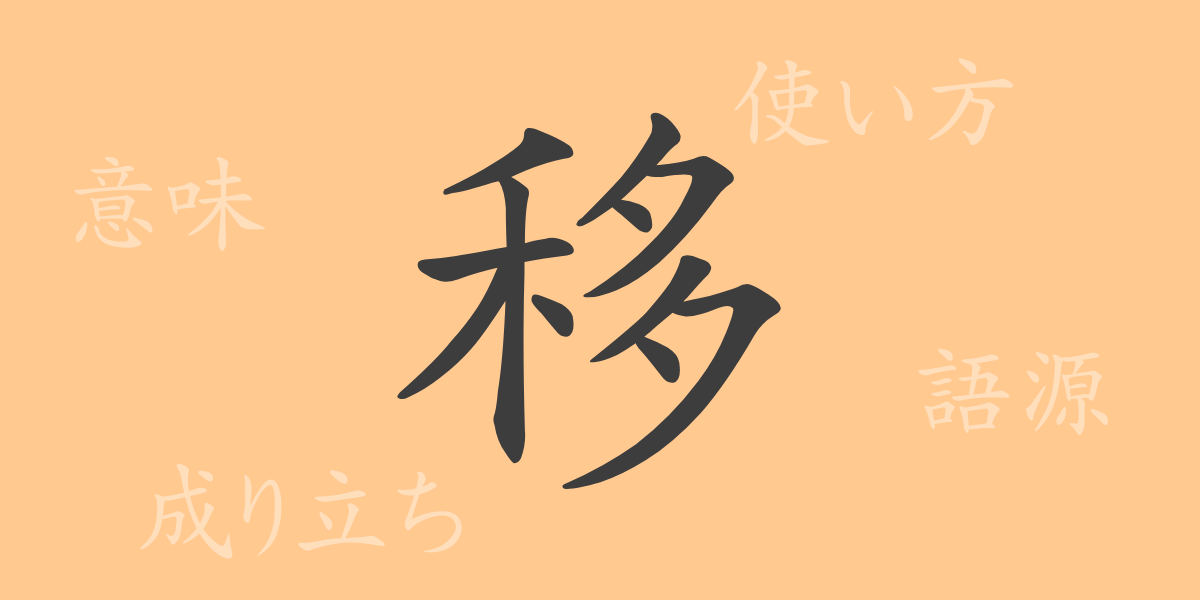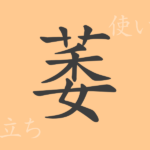“
The depth and complexity of Japanese written culture is reflected in its kanji, each character bearing a history and a deep meaning. This article spotlights the commonly used kanji ‘移’ (I), exploring its origins, meanings, usages, readings, and even related idioms and proverbs. Let’s dive into the world of ‘移’, a character deeply intertwined with our daily lives and Japanese culture.
Origins of 移 (I)
The kanji ‘移’ originated from ancient Chinese pictographs and ideographs. Initially, it combined ‘多’ (ta), a variant of ‘禾’ (Nogihen), with ‘而’ (Sikasite), depicting mature, heavy ears of grain. This symbolized movement or change, evolving over time to mean not just physical relocation but also abstract transitions and transformations.
Meaning and Usage of 移
‘移’ means to move or shift, referring both to physical relocation and changes in one’s mind or feelings. It also metaphorically covers the influence of change, such as societal shifts or transitions in eras. Commonly used in terms such as ‘移植’ (Isyoku), ‘移行’ (Ikou), and ‘感染を移す’ (Kansen-wo-utu-su), the character is versatile in everyday Japanese.
Readings, Stroke Count, and Radical of 移
Understanding the readings, stroke count, and radical of ‘移’ is crucial given its frequent use.
- Readings: The on’yomi (Sino-Japanese reading) is ‘I’, while the kun’yomi (native Japanese readings) include ‘Utu-ru’ and ‘Utu-su’.
- Stroke Count: The total number of strokes for ‘移’ is 11.
- Radical: The primary radical is ‘疋’ (Hikigasira), although it is often associated with ‘禾’ (Nogihen) in dictionaries.
Phrases and Proverbs Using 移
There are numerous idioms and proverbs involving ‘移’, reflecting its rich usage in Japanese.
- 移植 (Isyoku): Transplanting plants or organs.
- 移動 (Idou): Changing location or moving from one place to another.
- 感情移入 (Knjyouinyuu): Empathizing or feeling as others do.
- 風の便りに水の流れるごとし (Kotowaza): A proverb meaning rumors spread as swiftly as water flows.
Summary of 移
The kanji ‘移’ encompasses a wide range of meanings from physical movement to emotional changes, deeply ingrained in daily Japanese usage. Its rich expressive power showcases the depth of language, making ‘移’ an essential element in understanding Japanese culture and language.
“

























